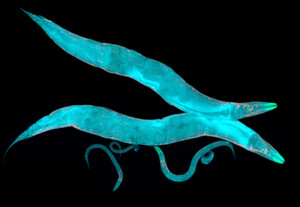
 Lead Researchers // Professor Chaogu ZHENG, Assistant Professor of the School of Biological Sciences and his Postdoctoral Fellow Dr Fuqiang MA
Lead Researchers // Professor Chaogu ZHENG, Assistant Professor of the School of Biological Sciences and his Postdoctoral Fellow Dr Fuqiang MAImagine our bodies as historical landmarks requiring per iodic res tor at ion. As we would examine a building's foundation before restoring it, understanding each cell's ‘evolutionary age stamp’ deepens our understanding of biology and disease origins. While prior research highlighted embryos in the middle stage of embryogenesis express the oldest genes, details at the cellular level were lacking.
A trailblazing study conducted by our researchers provided clarity. Using advanced single-cell RNA sequencing, the team determined that cells forming foundational tissues like the reproductive germline and digestive endoderm rely on older genes, indicating that these cells preserved ancestral functions that carry out essential tasks during evolution. In contrast, certain neurons and skin cells, ever-adaptive to their environments, utilise younger genes that generate novel functions to facilitate adaptation. These findings show that evolution has a careful way of matching genes to specific cellular functions.
通過分析秀麗隱桿線蟲個別細胞的基因表達,研究人員確定了不同類型細胞的進化年齡,揭示了物種演化的遺傳機制。這有助於我們了解單細胞的轉錄組年齡和可能的進化起源,對醫學和生態學等領域具有重要影響。
Journal paper: Transcriptome age of individual cell types in Caenorhabditis elegans (published in PNAS, 2023)
| < Previous | Next > |

